
International Journal of Semantic Computing
Scope & Guideline
Innovating Insights in Semantic Computing
Introduction
Aims and Scopes
- Semantic Technologies and Knowledge Representation:
The journal emphasizes the development and application of semantic technologies, including knowledge graphs, ontologies, and semantic networks, to facilitate better data understanding and interoperability. - Artificial Intelligence and Machine Learning:
A core area of focus is the application of AI and machine learning techniques to enhance semantic computing, including natural language processing, computer vision, and reinforcement learning. - Transdisciplinary Approaches:
The journal encourages research that bridges multiple disciplines, such as healthcare, robotics, and environmental studies, using semantic computing as a foundational tool. - Real-World Applications:
There is a consistent focus on practical applications of semantic computing in various sectors, including smart cities, healthcare, and multimedia processing, demonstrating the technology's impact on real-world challenges. - Innovative Algorithms and Methodologies:
The journal showcases innovative algorithms and methodologies that advance the field of semantic computing, including deep learning architectures and graph-based learning techniques.
Trending and Emerging
- Generative AI and Large Language Models (LLMs):
With the rise of LLMs, there is a growing focus on their capabilities, limitations, and potential applications, indicating a significant shift in how researchers approach natural language processing. - Transdisciplinary AI Applications:
Research is increasingly oriented towards transdisciplinary applications of AI, particularly in sectors like healthcare and environmental science, showcasing the versatility of semantic computing. - Real-Time Data Processing and Analysis:
There is an emerging trend toward methodologies that support real-time data processing and analysis, particularly in contexts like live video streaming and dynamic sensor data. - Explainable AI and Trustworthy Systems:
An increasing number of papers address the need for explainability and transparency in AI systems, reflecting a growing concern for ethical considerations and user trust in AI technologies. - Advanced Graph-Based Techniques:
Graph neural networks and other graph-based methodologies are gaining traction as researchers explore their potential in various applications, including image classification and knowledge graph construction.
Declining or Waning
- Traditional Rule-Based Systems:
Research on traditional rule-based systems has decreased as newer, more dynamic AI approaches gain traction. This shift reflects a broader trend towards machine learning and data-driven methodologies. - Basic Ontology Development:
The emphasis on developing basic ontologies without application context is waning. Researchers are now prioritizing ontologies that are integrated with advanced AI techniques and real-world applications. - Single-Domain Applications:
There is a noticeable decline in studies focused solely on single-domain applications of semantic computing. Instead, interdisciplinary and transdisciplinary studies are becoming more prevalent. - Static Data Integration Techniques:
As the field evolves, static approaches to data integration are less favored compared to dynamic, context-aware systems that leverage real-time data and machine learning.
Similar Journals

Journal of Web Semantics
Shaping Tomorrow's Web: Insights from Leading Scholars.Journal of Web Semantics, published by ELSEVIER, stands at the forefront of interdisciplinary research in the realms of Computer Networks and Communications, Human-Computer Interaction, and Software Engineering. With an impressive impact on the academic landscape, this journal holds a significant Q2 quartile ranking in multiple fields as of 2023, reflecting its strategic positioning within the top tier of scientific journals. As a valuable resource for researchers, professionals, and students, it provides a platform for innovative articles addressing contemporary challenges and advancements in web semantics—a crucial aspect of improving web usability and data integration. Operating with a Scopus Rank that places it in the commendable 71st, 67th, and 60th percentiles across its respective categories, the journal facilitates access to high-quality research findings, fostering a vibrant community of scholars dedicated to enhancing the synergy between technology and human interaction. The Journal of Web Semantics continues to evolve, marking its significance from 2003 to 2024 and offering a vital space for discourse that shapes the future of web technologies.

KNOWLEDGE AND INFORMATION SYSTEMS
Navigating the Evolving Landscape of Human-Computer InteractionKNOWLEDGE AND INFORMATION SYSTEMS, published by SPRINGER LONDON LTD, is a distinguished journal in the field of information systems, artificial intelligence, and human-computer interaction. With its ISSN 0219-1377 and E-ISSN 0219-3116, this journal has built a robust reputation since its inception, featuring a convergence of valuable research from 2005 through 2024. Catering to a diverse academic audience, it is classified among the leading journals in its category, proudly holding a Q1 ranking in Information Systems and Q2 rankings in multiple other domains. The journal aims to publish cutting-edge research that not only advances theoretical understanding but also provides practical applications within these rapidly evolving fields. Although it is not an Open Access journal, subscribers can access a wealth of knowledge critical for researchers, practitioners, and students looking to enhance their expertise. With a 2023 Scopus rank placing it within the 66th percentile for Information Systems, KNOWLEDGE AND INFORMATION SYSTEMS is an invaluable resource for those committed to pushing the frontiers of knowledge in technology and information science.

Neuromorphic Computing and Engineering
Unleashing the Power of Neuromorphic IntelligenceNeuromorphic Computing and Engineering, published by IOP Publishing Ltd, stands as a premier open-access journal dedicated to the interdisciplinary field of neuromorphic computing, which integrates principles of artificial intelligence and hardware architecture. Launched in 2021, this journal plays a pivotal role in addressing the surge of research in intelligent systems mimicking neurobiological architectures, thus fostering innovation across various disciplines, including electrical and electronic engineering and materials science. With an impressive Q1 ranking across multiple categories in 2023, including Artificial Intelligence and Hardware and Architecture, it attracts a global audience eager to explore cutting-edge developments. The journal is positioned to deliver high-impact research, evident by its Scopus rankings—particularly its notable standing in Electrical and Electronic Engineering (Rank #217/797) and Electronic, Optical and Magnetic Materials (Rank #80/284). Neuromorphic Computing and Engineering not only contributes to the academic discourse but also provides an accessible platform for researchers, professionals, and students to disseminate and discuss their findings, reflecting the critical advancements in this rapidly evolving domain.
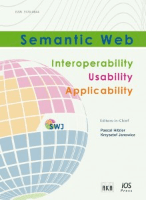
Semantic Web
Pioneering Insights for a Connected Digital WorldSemantic Web is a leading scholarly journal dedicated to the advancement of research in the area of semantic web technologies and their applications. Published by IOS PRESS, the journal has established itself as a vital resource for scholars and practitioners since its inception in 2010, with a continued focus on fostering interdisciplinary collaboration through its publication of pioneering research in Computer Networks and Communications, Computer Science Applications, and Information Systems. The journal currently holds a prestigious Q2 ranking across these categories and is indexed in Scopus, reflecting its strong academic impact with rankings in the top 20% of its field. Although the journal operates under a subscription model, it remains committed to disseminating high-quality research that addresses contemporary issues in the semantic web domain. As the field continues to evolve, Semantic Web seeks to facilitate innovation, collaboration, and the development of standards, making it an essential outlet for researchers, professionals, and students keen on exploring the transformative potential of semantic technologies.
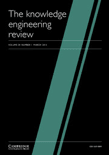
KNOWLEDGE ENGINEERING REVIEW
Illuminating Insights in Knowledge EngineeringKNOWLEDGE ENGINEERING REVIEW, published by Cambridge University Press, is a prestigious academic journal dedicated to the dynamic fields of Artificial Intelligence and Software Engineering. With an ISSN of 0269-8889 and an E-ISSN of 1469-8005, this journal has been a pivotal platform for scholarly communication since its inception in 1984, with its impact continuously recognized through its Q2 category ranking in both fields as of 2023. Operating from its headquarters in the United Kingdom, it boasts a robust Scopus ranking, placing it in the 73rd percentile for Software and the 69th percentile for Artificial Intelligence, a testament to its influence and relevance. Though it does not offer open access, the journal remains dedicated to advancing knowledge engineering by publishing high-quality research articles, insightful reviews, and innovative methodologies that address both theoretical and practical challenges. Researchers, professionals, and students find this journal an invaluable resource for cutting-edge developments in the realm of knowledge engineering.
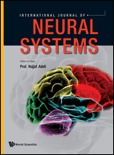
International Journal of Neural Systems
Connecting Ideas Across Computer Science and MedicineThe International Journal of Neural Systems, published by World Scientific Publishing Co Pte Ltd, is a prestigious peer-reviewed journal dedicated to the dynamic field of neural systems research. With an ISSN of 0129-0657 and an E-ISSN of 1793-6462, this journal serves as a vital resource for researchers, professionals, and students interested in the intersections of computer science, neural networks, and communications. Noteworthy for its impact, the journal has achieved impressive rankings in 2023, positioned in the Q1 quartile for both Computer Networks and Communications as well as in the miscellaneous category of Medicine, highlighting its interdisciplinary significance and broad relevance. The journal's Scopus rank places it at #33 out of 395 in its category, reflecting its influence and reach within the academic community. While the journal is not open access, its contributions to advancing the understanding of neural systems are invaluable, offering a platform for disseminating cutting-edge research and fostering collaboration among scholars. Since its inception, the International Journal of Neural Systems remains committed to excellence and innovation in its published content, making it an essential subscription for everyone involved in this exciting and rapidly evolving field.
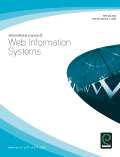
International Journal of Web Information Systems
Fostering collaboration in the world of information systems.The International Journal of Web Information Systems is a distinguished publication dedicated to advancing the field of web information systems, offering a platform for high-quality research and innovative practices. Published by EMERALD GROUP PUBLISHING LTD in the United Kingdom, this journal has established itself as a vital resource for researchers, practitioners, and academics from various disciplines, particularly in Computer Networks and Communications and Information Systems, as evidenced by its ranking in the 2023 quartile assessments (Q3) and Scopus rankings. With an H-index reflecting its impact within the academic community and a publication window spanning from 2005 to 2024, the journal is committed to fostering scholarly exchange and collaboration. While it currently does not have open access options, it provides valuable insights and breakthroughs that are essential for professionals and students navigating the ever-evolving digital landscape.
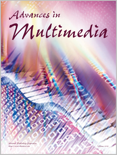
Advances in Multimedia
Exploring the Frontiers of Multimedia InnovationAdvances in Multimedia is a dynamic journal published by HINDAWI LTD, dedicated to the ever-evolving field of multimedia research. Since its inception in 2007, this Open Access journal has provided a platform for the dissemination of innovative findings and applications in various aspects of multimedia computing, including image processing, audio-visual technology, and cross-media communication. Although its coverage in Scopus has been discontinued, the journal remains relevant in the academic community, with a focus on fostering new ideas and discussions among researchers and practitioners. With an impact factor reflective of its contributions to the field, Advances in Multimedia plays a crucial role in bridging theoretical and practical applications, enabling scholars and students to engage with cutting-edge topics. This journal serves as a gateway for knowledge, inviting contributions that enhance our understanding of multimedia's impact on both technology and society.

Journal of Logic Language and Information
Advancing Interdisciplinary Insights in Logic and LinguisticsThe Journal of Logic Language and Information, published by SPRINGER, stands as a leading interdisciplinary platform dedicated to the exploration of the interconnections between logic, language, and information theory. With a history spanning from 1992 to 2024, this esteemed journal provides a vital forum for researchers, professionals, and students in fields such as Computer Science, Linguistics, and Philosophy. Notably recognized in the 2023 rankings, it holds a Q2 quartile in Computer Science (miscellaneous) and Q1 quartiles in both Linguistics and Language, and Philosophy, reflecting its high academic quality and relevance. Despite its nuanced focus, the journal's diverse scope attracts a global readership, encouraging innovative research and critical discourse. Although it is not an Open Access publication, the Journal's valuable contributions can be accessed through various institutional subscriptions, ensuring that its scholarly output remains influential within the academic community.

International Journal of Advanced Computer Science and Applications
Connecting Scholars to Shape the Future of Computing.International Journal of Advanced Computer Science and Applications, published by SCIENCE & INFORMATION SAI ORGANIZATION LTD, stands as a significant platform in the ever-evolving field of computer science. With its ISSN 2158-107X and E-ISSN 2156-5570, the journal aims to disseminate high-quality research and innovations from diverse areas within computer science, embracing cutting-edge technologies and methodologies. As of 2023, it holds a commendable Q3 ranking in the field, placing it among a competitive cohort of journals while showcasing its commitment to scholarly excellence. The journal operates under an open access model, ensuring that its content is widely accessible to researchers, professionals, and students alike, thereby fostering a collaborative environment for knowledge-sharing and advancing the discipline. With a history of converged contributions from 2017 to 2024, the International Journal of Advanced Computer Science and Applications serves as a vital resource for those seeking to stay at the forefront of computer science research and applications.